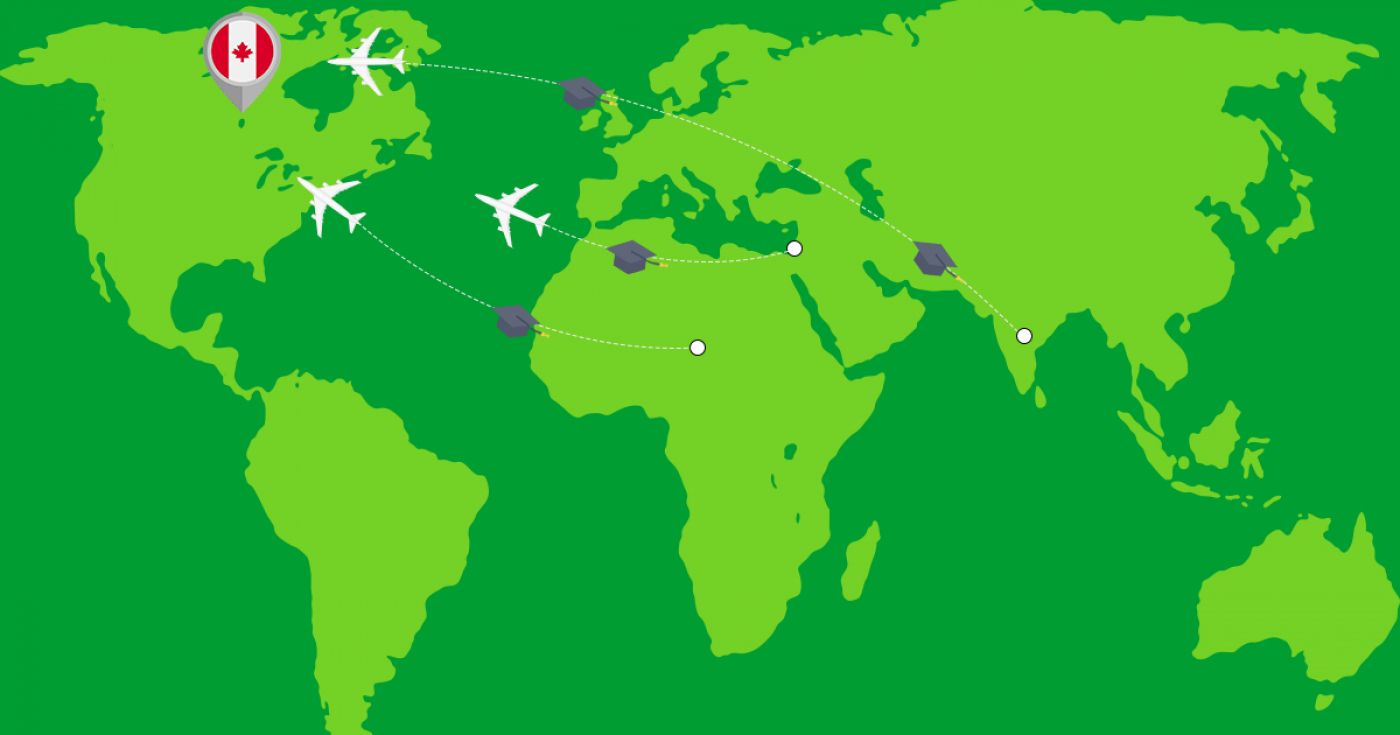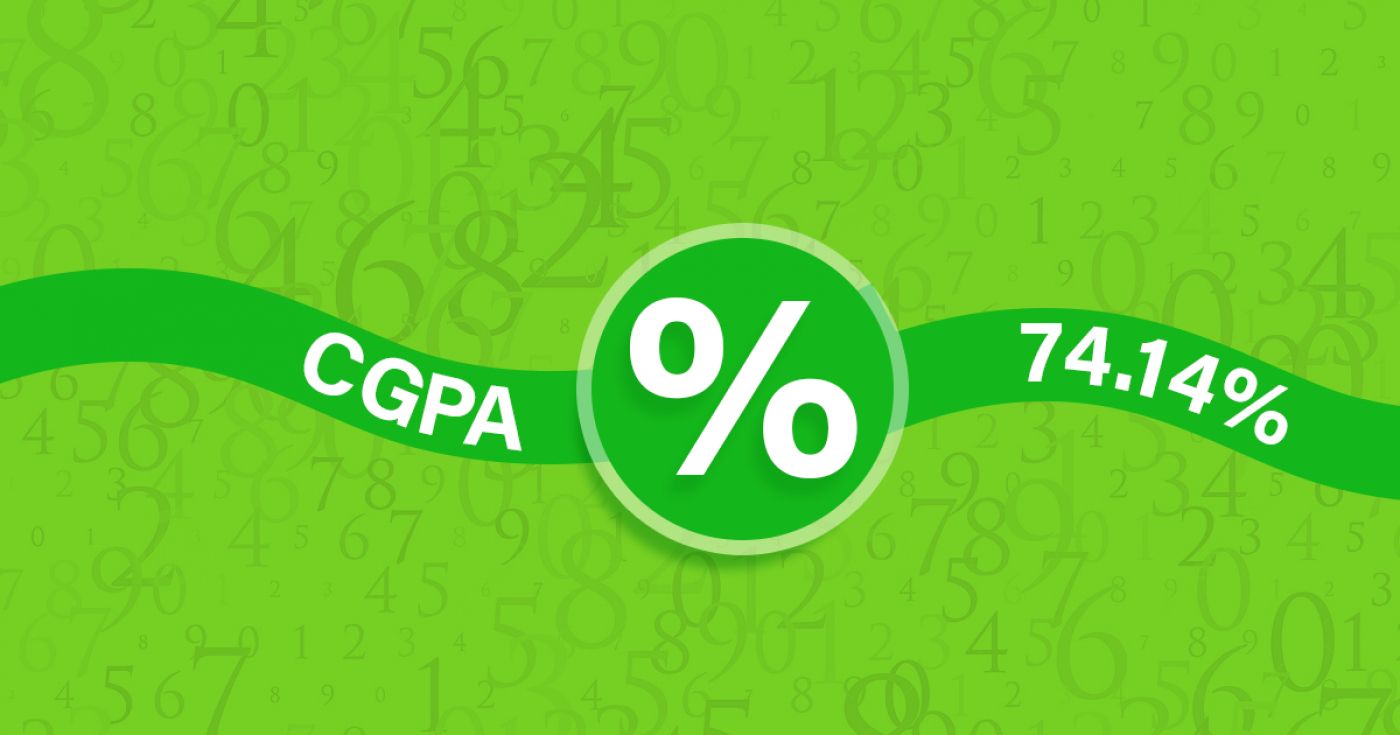Diploma in Building Construction Technician (Co-op Optional)
at Humber College North Campus Canada
Overview
Humber’s Building Construction Technician diploma program is one of three stackable programs within the Carpentry-Construction group. Along with the Carpentry and Renovation Techniques certificate and the Construction Engineering Technology advanced diploma, the program introduces students to the carpentry trade, gives practical experience with trade regulations and with best practices. Students will be able to move from this diploma program into the advanced diploma program. Additionally, Humber’s Carpentry and Renovation Technician diploma and Industrial Woodworking Technician diploma offer additional pathways and laddering opportunities.
You will learn worksite health and safety practices in accordance with legislation and regulations; and how to review building plans and complete work in compliance with contractual obligations, codes, applicable laws, bylaws, standards and ethical practices. Coursework will include sustainability practices.
You will learn to produce project sketches and documents in accordance with project specifications, assist in the preparation of estimations and to safely operate tools. You will be well-prepared for all building stages - from site layout and footings to the application of interior and exterior finishes.
Optional Co-op
This program offers a co-op option. A co-op work term enables you to apply your skills and knowledge in a work environment and gain valuable, practical experience related to your program of study. You will learn new skills, learn about the world of work and meet people in your profession.
For students who are accepted into the program, one co-op work term will take place between Semesters 2 and 3. There are limited spaces in the co-op option. Therefore, you will apply for the co-op option during Semester 1 and be informed of the process by which to apply. While co-op work opportunities are not guaranteed, as students are in a competitive job placement market, participating students will receive a wide range of services to help them find a co-op opportunity.
30
Application Processing Days
Under Graduate
Program Level
Fact & Figures
Full Time On Campus
Study Mode
24
Duration
Humber College North Campus
Location
Diploma in Building Construction Technician (Co-op Optional) Assistant Fee
$16394
Tuition Fee
$12000
Average Cost of Living
$75
Application Fee
Diploma in Building Construction Technician (Co-op Optional) Admissions Requirements
- Minimum Level of Education Required: To be accepted into this program, applicants must have Grade 12 / High School Diploma.

Get superfast admissions at top Diploma in Building Construction Technician (Co-op Optional) institutes in 2024
Benefits of choosing
➤Admission’s guaranteed at Top institutes across the world.
➤Enjoy exclusive application fee waiver’s with Edmissions.
➤Unlimited FREE Counselling sessions with Edmission’s
Experts
➤Get Tips from industry veterans to crack the IELTS exam in 1
week.
➤Assistance with scholarships, loans, forex, student accommodation and visa guidance.
Work Permit Canada
Students who wish to work in Canada require a work permit to do so. A student in Canada can work part-time during the course of his studies and full-time during holidays and semester breaks and post the completion of their course/program.
Rules for getting a part-time work visa in Canada
You can also work part-time on campus at your university.
Work Permit
Duration
Your part-time work permit will be valid for as long as you have a valid study permit.
Working Hours
20 Hours/Week
As a full-time student, you can work for a maximum of 20 hours a week. However, you can work full- time during holidays and breaks.
Document Required to Work in Canada
List
To apply for a work permit, you will need a study permit that mentions that you are allowed to work part-time on campus.
Social Insurance Number
Study Permit
You will need a Social Insurance Number (SIN) to Service Canada. if you wish to work in Canada during the course of your studies. To apply for the same, you need a valid study permit, and you should be a full- time student at a recognized university.

You can work part-time off-campus if you are studying in the Quebec province.
Duration of Work Permit Canada
Your part-time work permit will be valid for as long as you have a valid study permit.
Work Hours Canada
As a full-time student, you can work for a maximum of 20 hours a week. However, you can work full- time during holidays and breaks.
Document Required to Work in Canada
To apply for a work permit, you will need a study permit that mentions that you are allowed to work part-time on campus.
Social Insurance Number
You will need a Social Insurance Number (SIN) to Service Canada if you wish to work in Canada during the course of your studies. To apply for the same, you need a valid study permit, and you should be a full- time student at a recognized university.
Working after completing your course
In Canada, you will need a work permit to get a full-time job in Canada after finishing your studies. You chose a work permit like the Post-Graduation Work Permit (PGWP) if you wish to stay back in Canada and work full-time.
Visit Government of Canada Website for more detail
Post-Graduation Work Permit (PGWP)
The Post- Graduation Work Permit (PGWP) allows you to work for three years in Canada if you have completed a two years degree or more.
Application
how can i apply
You can either apply online or download the form and mail the application along with the required documents. Pay your fee and then wait for the decision to come.
Application Documents Required
List
To apply for the work visa, you need a degree from a recognized and accredited Canadian University along with an intention to stay and work in Canada only temporarily.
When to Apply?
One can apply for the full-time work permit in the first three months post the completion of their course during which the study permit is still valid.
How long does it take?
90 days
You will have to wait for 90 days for the decision on your work permit.
Duration
3 Years
The work permit is valid for 3 years if you have completed a two years degree program or more.
Fees
CAD 255
The fee for the work permit is CAD 255 plus the holder fee and the work permit processing fee.
Monthly Wages
CAD 1,600
An applicant is guaranteed a minimum salary of CAD 1,600 per month while working in Canada. This amount though varies on the job and the province you are working in.
Work Hours Canada
No Limit
There is no maximum limit, and you can work for as many hours as you want on the full-time work permit.

Required Documents
List
To apply for the work visa, you will need the following documents:
- Forms: IMM 5710, IMM 5476 and IMM 5475;
- Graduation Proof
- Proof of payment of work permit fees
- Copies of your travel and identification documents, passport pages and current immigration document.
Till a decision is made on your work visa, you can continue to work full time. All you need to have is your completed degree, should have applied for the permit before the expiry of your study permit and you should be allowed to work off-campus.
Information
Disclaimer
The information provided about the work permit is true and complete to the best of our knowledge. All recommendations are made without any guarantee on the part of the author or the publisher. The author and the publisher, therefore, disclaim any liability in connection to and with the use of this information.
Detailed Program and Facts
30
Application Processing Days
Full Time On Campus
Program Intensity
Under Graduate
Program Level
24
Duration
Study Visa
Student Visa For Canada
Any student who wishes to study in Canada requires a student visa. Some of the essential information for the application process is given below.
When Should I Apply?
4 to 6 months
Ideally, one should apply for the study permit at least 4 to 6 months before the commencement of your course/program.
Bank Account
No Need!
There is no need for a blocked bank account to apply for a student visa to Canada.
Duration of visa
Course Duration + 3 Months
The student visa is valid for the entire period of your course plus three months.
Time to Wait for Visa
35 Days
It takes time. It might take up to 35 days post your interview for the application process to complete and for you to finally receive your visa.
Appointment
Required
It varies from applicant to applicant, but one may have to take part in one or two visa appointments, namely a medical examination and a visa interview.
How you can apply
Application Process
An applicant can either apply online or offline by visiting a visa application centre and submitting their documents. After the analysis of your application, you might be called for an interview.
Fee
Visa Fee
The visa application fee for Canada is CAD 150.
Minimum Funds
833 CAD, 917 CAD
You require a minimum monthly amount to be deposited into your account to prove that you can sustain yourself while studying in Canada. If you are studying in Quebec, you need to have a monthly minimum of CAD 917, and if you are studying in a province except for Quebec, you need to have a minimum of CAD 833 per month.
Any other expenses
Required
You will have to pay a medical examination fee and a visa application service fee to the tune of CAD 15 if you visit a visa application centre to apply for your visa.

Medical Examination
Required
One has to undergo a series of medical examinations to be deemed fit for a student visa of Canada. The tests mostly include blood and urine tests, chest x-rays and other organ checkups.
Language Skills
Not Required
one doesn’t need to prove their language skills in applying for a Canadian Visa.
Disclaimer: The information provided about the work permit is true and complete to the best of our knowledge. All recommendations are made without any guarantee on the part of the author or the publisher. The author and the publisher, therefore, disclaim any liability in connection to and with the use of this information.
Other Courses by Humber College North Campus,Canada
Creative Arts & Design
Bachelor of Interior Design
Humber’s Bachelor of Interior Design degree program balances creativity with sensitive, pragmatic design thinking. Our graduates problem-solve, investigate and explore design environments where people thrive.
Engaging interior design studios enable you to master an evidence-based design process, develop effective presentation abilities and acquire vital professional practice skills. Team collaboration among student groups mirrors industry team practices.
Observational field trips provide opportunities for you to connect classroom theory, such as the perception of space and human interaction, with built environments. In the fourth-year, you will interact with industry mentors to research, develop and document a large scale project from initial concept to construction documentation.
Additionally, a self-directed volunteer project helps connect your passion for design to the community and the design industry. Students have worked with organizations such as the Furniture Bank, Toronto District School Board, youth and women’s shelters, and Habitat for Humanity.
Learning Outcomes
- Upon successful completion of the program, a graduate will:
- Design, document and communicate high quality interior design propositions of varying size, scope and complexity employing principles of evidence-based design methodology.
- Select and employ appropriate visual languages to investigate, analyze, interpret, develop and articulate ideas for two and three-dimensional projects.
- Produce sophisticated design proposals emphasizing three- dimensional quality of space achieved through architectural detailing.
- Integrate sustainable practices in the design process and demonstrate leadership by educating users in these principles.
- Analyze the complexity of forces – economic, political, physiological, sociological and technological – which influence the design of the physical environment.
- Select appropriate methods and materials to achieve the technical functionality and aesthetically pleasing built environment.
- Demonstrate an understanding of the relationship between human behaviour and the built environment and the implications in preparing design solutions.
- Assess the implications for interior design presented by key developments in current and emerging materials, media and technologies and in interdisciplinary approaches to contemporary design practice.
- Employ effective and professional communication skills and techniques to interact, negotiate and undertake collaborative efforts including meaningful discussion of one’s work in an open studio environment, with audiences, clients, markets, end-users and team members.
- Confidently employ appropriate professional accountability, personal and business ethics demonstrating competency of industry practices.
- Employ appropriate conventions of measurement, scale, site measuring, drafting and volumetric manipulation through a variety of manual and digital modeling techniques.
- Design to exceed the minimum standards of applicable laws, codes, regulations, and practices that protect the health, safety and welfare of the public.
- Employ both convergent and divergent thinking in the process of observation, investigation, speculative enquiry, ideation, rationalization and implementation of design solutions.
- Source, navigate, select, retrieve, evaluate, manipulate and manage information from a variety of sources, both primary and secondary.
- Analyze information and experiences in order to articulate an academically structured, sustained and well-supported argument supporting a design issue or creative interior design solution.
Work Placement
You will apply your hands-on, job-ready skills with a 420-hour paid work placement. Career management workshops help you to develop effective job search skills. You will find your own work placement with the support of work placement consultants and faculty.
48 month
Duration
$ 20485
Tuition
Public Safety and Legal Studies
Graduate Certificate in Regulatory Affairs
Humber’s Regulatory Affairs graduate certificate program focuses on developing the concepts, skills and techniques required to work in regulatory affairs in the pharmaceutical, medical device or biotechnology industries. You will gain knowledge of the regulatory system, legislation, procedures and practices which relate to the development, manufacture, quality assurance and marketing of health-related products.
The importance of internationally harmonized regulations and future trends in the industry will be examined by analyzing relevant international and Canadian legislation and regulations. You will study a wide range of regulations and standards including good manufacturing practices, good laboratory practices, good clinical practices, good documentation practices, the International Organization for Standardization (ISO), the Canadian Food and Drugs Act, the Environmental Protection Act, principles of regulatory compliance and inspections, drug establishment licensing, and related standards and guidelines. Teamwork and communication skills are emphasized and you will acquire information technology skills that assist communication and data management specific to regulatory affairs.
You will become familiar with the steps necessary for product submission; how to assemble documents and statistical evidence; the complexity of product registration, negotiation and follow-up; and how these are linked to the federal government and provincial formularies.
Following two academic course-based semesters, students complete a three-month placement that provides opportunities to apply and integrate theoretical knowledge and skills into real-world work settings. Most placements are in the following sectors: pharmaceutical, biotechnology, medical device organizations, government agencies or food industries.
The pharmaceutical industry is facing constant development. As society is aging more focus is being given to the development of new drugs and the improvement of health care. The comprehensive training we provide, combined with previous degrees and work experience, make our students highly marketable. Our graduates work in a spectrum of fields such as pharmaceutics, biotechnology, medical devices, natural health product industries or in government.
12 month
Duration
$ 26202
Tuition
Skilled Trades
Certificate in Welding Techniques
Humber’s Welding Techniques certificate program is designed to help introduce prospective welders to the trade. The program aims to facilitate employment and entry into the apprenticeship program by giving you practical experience with trade regulations and practices. You will gain a solid understanding of the various technical theory and elements of the welding trade. You will be exposed to topics including health and safety, blueprint reading and sketching, applied math, communication, shielded metal arc welding, gas metal arc welding, introduction to computers, and all position structural welding. You will learn valuable skills by using the latest industry software programs and working in fully equipped up-to-date labs and shops. At Humber, skilled instructors highlight current trends within the industry and strive to duplicate situations that apprentices and skilled tradespeople will see in their everyday working life.
12 month
Duration
$ 16414
Tuition
Business & Management
Advanced Diploma in Business Administration
Humber’s Business Administration advanced diploma program allows you to develop extensive knowledge on how businesses work and teaches you to become competent in the full range of skills needed to facilitate business operations.
Courses in operations management, accounting, human resources management, marketing research and much more will give you the opportunity to cultivate key business skills such as communication, teamwork, project management and strategic business analysis. This program is built on a common platform of a solid business education – principles of management, marketing, business law, finance mathematics and microeconomics. This common platform is shared with other business diploma programs in year one and is expanded on in year two.
Work Placement
You’ll be assisted in finding a paid or unpaid business work placement where you’ll practise your skills during an 84-hour assignment. This adds valuable hands-on experience to your resumé. Close relationships with the business professionals who constantly update the curriculum will give you valuable networking contacts.
36 month
Duration
$ 16394
Tuition
Hospitality, Tourism, Wellness Leisure & Sports
Diploma in Culinary Management
Humber’s Culinary Management diploma program teaches you the skills you need to excel as a chef in the culinary industry. Work in the world’s finest dining establishments, and take advantage of international study opportunities. Kick your career up a notch by competing in on-campus, national and international skill competitions.
This program will also prepare you to to design, organize, implement, serve and execute your own dinner event in the “Chef's Table” course. Using a market-related themed menu, mise en place and à la carte cooking, students will showcase classical and contemporary techniques and skill. The Charcuterie and Advanced Garde Manger courses involve students using contemporary level food presentation, styling techniques and becoming proficient with various butchery processes on a wide range of meats. The Emerging Trends course is unique among Ontario colleges, providing students with the opportunity to work alongside local guest chefs. Students also have the opportunity to experience preparing meals on the Humber Food Truck, Humber’s classroom on wheels. In addition, students work alongside some of the country’s best chefs. Students receive unmatched time spent with several leading chefs about what’s happening in today’s restaurant scene and food industry.
Note: A fast-track program is implemented for the January start. The first semester (January to April) is immediately followed by the second semester (May to August), resulting in a short summer break. The third semester begins in September, allowing students to complete the two-year program in just 16 months.
Qualified students will complete work placements in the kitchen of a leading hotel, restaurant or golf course of their choice for seven unpaid weeks in the fourth semester (40 hours per week). Students are also able to apply for placements across Canada and internationally, which has jumpstarted many successful careers.
The demand for passionate, well-trained chefs around the world is constant, and with more than 7,000 restaurants reflecting a wide variety of cultures and cuisines, Toronto is the ideal place to launch your culinary career. The creative culinary and management skills you’ll gain at Humber will put you in high demand in hotels, restaurants, golf clubs, resorts, hospitals, corporate settings and more. If you have an entrepreneurial spirit, you’ll be inspired by the potential to start your own business in the future. Food service is a constantly evolving industry that has never been more in the spotlight, and culinary management at Humber is your gateway.
24 month
Duration
$ 16394
Tuition
Creative Arts & Design
Advanced Diploma in Graphic Design
Humber’s Graphic Design advanced diploma program develops creative and strategic designers who execute for a wide range of interactive media such as web and screen, user interaction, motion design and also traditional print products. While learning and mastering design concepts, you will generate creative solutions and produce visuals for effective multimedia communication. As you gain desirable knowledge and skills, you will be exposed to the many topics and tasks required in contemporary design work. You will become strategically and typographically skilled and master digital, editorial, interactive, information, motion and web design techniques. Additionally, relevant programming and entrepreneurship knowledge will round out a comprehensive skillset.
As part of our interaction and design common platform cluster, this program will expose you to many aspects of design and allow you to collaborate with students in related fields. The first semester is shared with the Multimedia Design and Development program, and the first year of this program is shared with the Web Design and Interactive Media program. Your exposure to different types of design work and common programming elements will enable you to investigate your options and choose a focus prior to your second year of study.
You will explore the many facets of graphic design and be instructed and trained on industry-based technology and software. Cross-disciplinary projects will allow you to develop collaborative and teamwork skills while preparing you for workplace environments. This program includes the unique opportunity to work with BuildingF, our in-house creative & business communications hub, working on real projects for clients while building your portfolio and professional contacts.
36 month
Duration
$ 19557
Tuition
Business & Management
Graduate Certificate in Insurance Management - Property and Casualty
Insurance has become an integral part of virtually everything we do in life and business. Roles within the insurance industry are many and varied. Whether you enjoy working with numbers, doing research, solving problems or working with people, you can find your specialty in insurance.
Humber’s Insurance Management – Property and Casualty graduate certificate program prepares you for a variety of entry level management career paths in the large and growing property and casualty insurance industry. Learn the fundamentals of the industry and its three main functional areas – underwriting, loss adjusting and agency/brokerage – and gain transferable skills in business communications, computer applications, insurance accounting and metrics, marketing, sales and customer service, project management and leadership. Employment-focused experiential learning helps you consider a variety of options, as you launch your career.
Learning Outcomes
Upon successful completion of the program, a graduate will:
- Differentiate the functions of and the relationships between various elements within the structure of the insurance industry in Canadian and global contexts in order to identify business opportunities, challenges and solutions.
- Use current and relevant insurance industry-specific terminology when communicating with stakeholders.
- Assess and manage the four major categories of risk (hazard, operational, financial and strategic) to determine insurance needs associated with specific cases.
- Apply best practices for risk management to finance the negative consequences of risk events in multifaceted situations.
- Provide evidence-based recommendations for management of hazards and risks faced by an organization.
- Evaluate the clauses, terms and conditions of various insurance policy wordings in order to determine the appropriate coverage according to defined risk tolerance levels.
- Adjust, negotiate and settle insurance claims to satisfy needs of claimants and providers.
- Provide rationale for the acceptance or rejection of an application for insurance to uphold efficacy of decision-making.
- Evaluate the needs of a commercial and/or personal client in order to plan and recommend an insurance program that provides protection from identified exposures.
- Select leadership and communication strategies necessary to manage others and accomplish organizational goals.
- Prepare and deliver effective integrated marketing, customer service and sales plans to further organizational objectives.
- Develop, interpret and present common property and casualty insurance industry metrics and financial statistics and data to support organizational decision-making.
- Apply project management methodologies to identify, plan, and execute various property and casualty insurance managerial projects.
- Develop strategic business plans in order to respond o changing opportunities and challenges within the property and casualty insurance business.
Work Placement
Get hands-on experience in the industry with a 160-hour (minimum) work placement that will give you the opportunity to apply what you have learned in the classroom. Students initiate the placement with the aid of faculty, targeting companies in the Greater Toronto Area. Placements can be completed on a part-time basis throughout the academic year, or full time during the term immediately at the end of the program.
12 month
Duration
$ 18048
Tuition
Skilled Trades
Diploma in Cosmetic Management
Humber’s Cosmetic Management diploma program gives you the business base and cosmetic skills that you need for a career in the growing cosmetic and personal care industries.
The curriculum, designed in collaboration with the cosmetics industry, focuses on current market trends and touches on all disciplines that students require to enter the personal care products sector. Courses encompass training in cosmetic and skin care product ingredients, retailing, merchandising, marketing and social media, make-up and skin care application, as well as the skills necessary for running an independent business. Topics such as environmental implications and multicultural sensitivity are embedded in each course.
Our program delivers a range of business-focused cosmetic courses. You will be introduced to the history of cosmetics and fashion; retail buying; cosmetic and fragrance product knowledge; and application including colour theory and skin care fundamentals. You will study business ethics and sustainability, cosmetic selling, and counter management. You will learn how to use relevant computer software and build on your vocational skills with advanced cosmetic application and facial techniques.
Rounding out your education, you will develop your entrepreneurial skills and learn how to plan events and product launches as you plan and execute a skin or cosmetic workshop. You will also learn more advanced application techniques for TV, film and special effects.
Learning Outcomes:
Upon successful completion of the program, a graduate will:
- Assess the chemical composition of cosmetic products and recommend appropriate cosmetic treatments.
- Differentiate ingredients found in cosmetic products and identify their functions and effects.
- Identify and apply various make-up equipment and techniques used for professional application.
- Create a variety of make-up special effects to portray a theme, cater to the requirements of an event, and/or fulfil the demands for TV and Film sets.
- Apply relevant knowledge of anatomy, physiology, wellness, aging issues and skin disorders to the provision of specialized cosmetic application, in addition to health related issues.
- Demonstrate successful characteristics of a professional salesperson applying customer relation principles, diversity practices, sales strategies and promotion techniques.
- Identify, analyze and apply colour relationships and theories in the application of cosmetics and products for diverse skin types.
- Demonstrate effective professional communication skills in verbal and written formats.
- Apply business, legal and accounting principles effectively addressing the business needs of an organization.
- Analyze market needs and apply strategic growth principles.
- Identify the principles of organizational behaviour and human resource management.
- Identify the ecological, ethical and environmental issues of the cosmetic industry.
24 month
Duration
$ 16394
Tuition
Health Sciences, Nursing and Emergency Services
Certificate in Pre-Health Sciences Pathway to Advanced Diplomas and Degrees
This is one of the few Pre-Health Pathway programs with real science lab experience with no prior lab experience/studies necessary. There are a multitude of careers in health sciences, and this program is a pathway to explore your options. You will strengthen your science, writing and math skills, and explore career paths in biotechnology, pharmacy technician, registered or practical nursing, Chinese medicine, paramedicine and more.
This program will enable you to:
- Experience learning in a science lab
- Participate in lab teams and conduct science experiments – starting in your first semester
- Build your foundational skills in math, critical thinking, problem solving – key skills for every career in the health sciences
- Gain science credits in Biology, Anatomy, Chemistry, Physics and more
- Hone your academic skills for future studies
- Explore many possible careers in health sciences with guest speakers and pathways events
- You will learn to analyze personal and professional situations from various perspectives to help develop a sense of personal and social responsibility as a citizen and allied health professional.
12 month
Duration
$ 16414
Tuition
Engineering & Technology
Advanced Diploma in Mechanical Engineering Technology
Humber’s Mechanical Engineering Technology advanced diploma program prepares you for a career in the design and manufacturing of mechanical components and applications. The curriculum covers the theory and the skills required to:
- Program computer numerical control (CNC) machine tools using computer-aided manufacturing (CAM) software – Mastercam
- Apply design principles and practices
- Design and manufacture process problems
- Learn 2D computer-aided design (CAD) software - AutoCAD, 3D CAD software – SolidWorks
- Design and manufacture mechanical parts and assemblies
- Apply design principles and practices to a variety of engineering problems and environments
Our program builds upon the solid technical foundation of the Mechanical Engineering Technician program. The skills first learned in the technician program are enhanced through project-based learning and increased hands-on practice in the labs.
This program offers a co-op option. Co-op work terms enable you to apply your skills and knowledge in a work environment and gain valuable, practical experience related to your program of study. You will learn new skills, learn about the world of work and meet people in your profession. For students who are accepted into the program, three co-op work terms will take place. The first four-month work term is between Semesters 2 and 3, and then two consecutive four-month work terms between Semesters 4 and 5. There are limited spaces in the co-op option. Therefore, you will apply for the co-op option during Semester 1 and be informed of the process by which to apply. While co-op work opportunities are not guaranteed, as students are in a competitive job placement market, participating students will receive a wide range of services to help them find a co-op opportunity.
Begin a career designing and manufacturing with a Mechanical Engineering Technology advanced diploma. Our graduates are able to perform engineering design and equipment/technology selection for major components in the design of mechanical systems; liaise with fabrication and engineering staff, as well as with vendors, for technical information and specifications; prepare preliminary and final cost estimates; and prepare and evaluate production processes, costing, tool design and inspection requirements. Graduates work in two main areas:
- Drafting and design, equipment testing, mechanical equipment installation and consulting engineering offices
- The metal cutting industries, programming, cost estimating, quality control and inspection, and in machinery sales
36 month
Duration
$ 16414
Tuition
View All Courses by Humber College North Campus, Canada
Top Study Abroad Exams
Popular Universities to Study Abroad
- University of Waterloo
Waterloo
- University Canada West
Vancouver
- University of Windsor
Windsor
- Cape Breton University
Sydney
- Dalhusie University
Halifax
- Carleton University
Ottawa
- University of Ottawa
Ottawa
- University of Guelph
Guelph
- Explore more colleges in Canada
- University of New Haven
West Haven
- Kent State University
Kent
- Wright State University
Dayon
- San Jose State University
West Haven
- Clark University
Worcester
- Rowan University
Glassboro
- Golden Gate University
San Francisco
- Arkansas
San Francisco
- Explore more colleges in USA
- Coventry University
Coventry
- University of Birminghame
Birminghame
- De Montfort University
Leicester
- Cardiff University
Cardiff
- BPP University
London
- University of West London
London
- University of Nottingham
Nottingham
- University of Warwick
Coventry
- Explore more colleges in UK
- Auckland Institute Of Studies
Auckland
- Massey University - Auckland Campus
Albany
- Eastern Institute of Technology - Auckland Campus
Auckland
- NorthTec - Auckland Campus
Auckland
- Massey University - Manawatu Campus
Palmerston North
- University of West London
London
- Wellington Institute of Technology (WelTec) - Petone Campus
Lower Hutt
- Otago Polytechnic - Dunedin Campus
Dunedin
- Explore more colleges in New Zealand
- Chandigarh University
Mohali
- Parul University
Vadodara
- Sharda University
Greater Noida
- Jain University
Bangalore
- Bennett University
Greater Noida
- Lovely Professional University
Phagwara
- Chitkara University
Rajpura
- Brainware University
Kolkata
- Explore more colleges in India
- Abu Dhabi University
Abu Dhabi
- Gulf Medical University
Ajman
- New York University
Abu Dhabi
- Emirates Aviation University
Dubai
- Higher Colleges of Technology
Dubai
- British University in Dubai
Dubai
- Al Ghurair University
Dubai
- American University in the Emirates
Dubai
- Rochester Institute Of Technology Dubai
Dubai
- Emirates Academy of Hospitality Management
Dubai
- American University of Ras Al Khaimah
Ras Al Khaimah
- Explore more colleges in UAE
- Ras Al Khaimah Medical and Health Sciences University
Ras Al Khaimah
Explore Colleges and Courses in Canada
- Arts & Humanities in canada
- Business & Management in canada
- Natural Sciences & Mathematics in canada
- Engineering & Technology in canada
- Computer Science & IT in canada
- Health Sciences, Nursing and Emergency Services in canada
- Social Sciences in canada
- Creative Arts & Design in canada
- Hospitality, Tourism, Wellness Leisure & Sports in canada
- Environmental Studies & Earth Sciences in canada
Latest Blog Posts
Trending Blog Posts
Search, Shortlist, Apply and get accepted! It’s that Simple to pursue your dream to Study abroad with Edmissions. Our team of experts provide you the right guidance that helps you to take admission in your dream college in countries like Canada, the USA, the UK
© 2021-2024 Edmissions - All rights reserved.
TALK TO OUR EXPERTS











